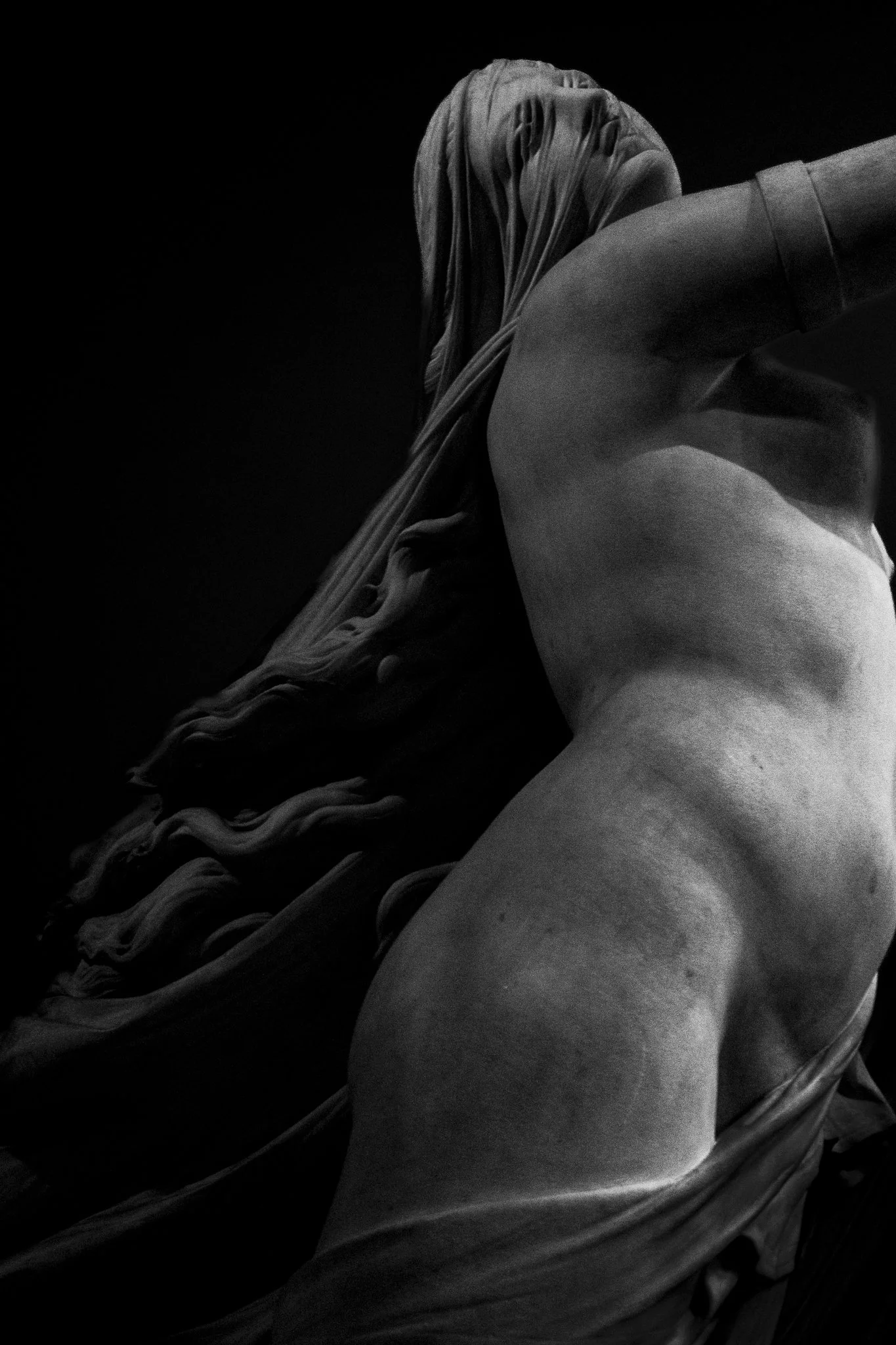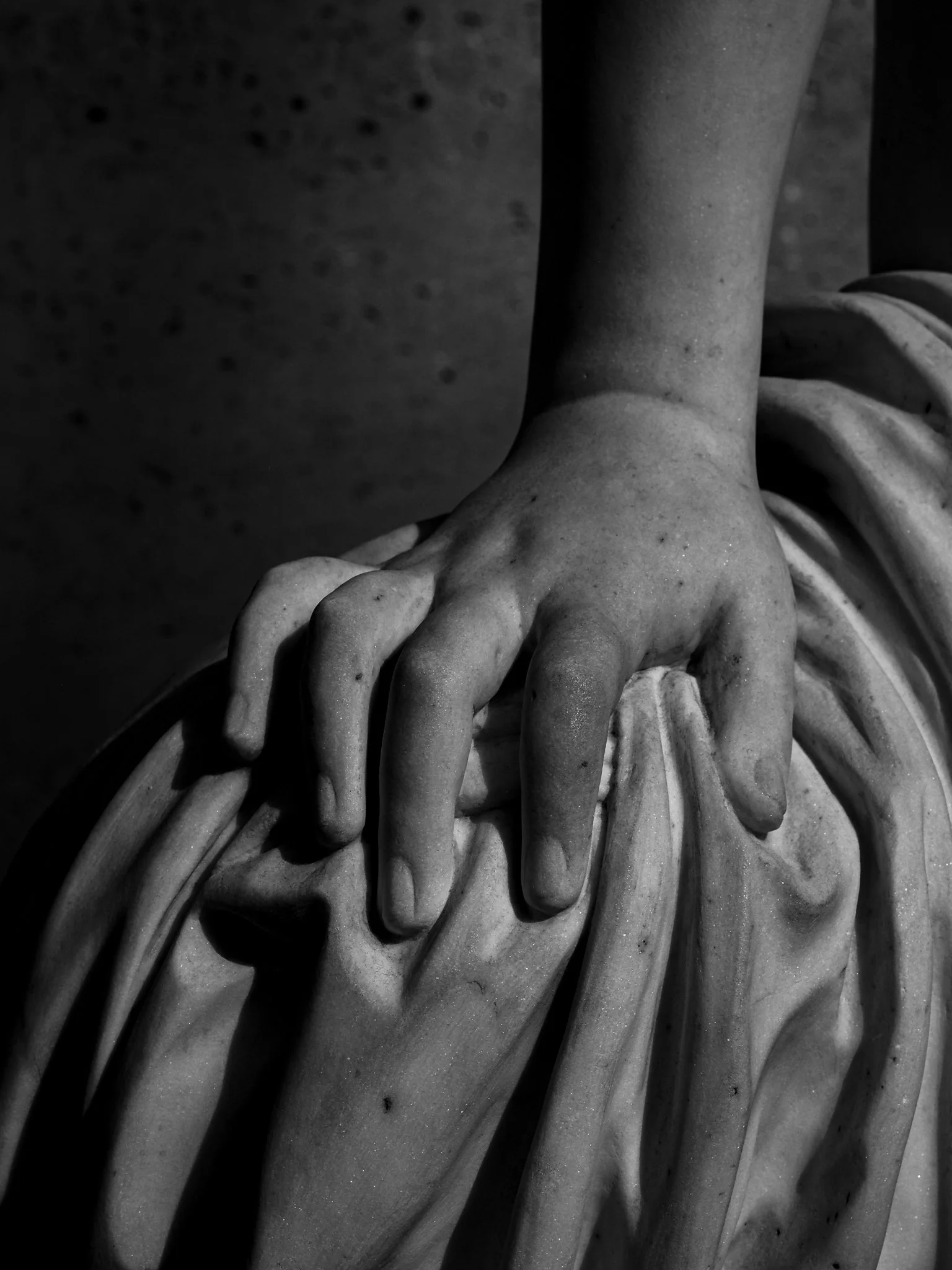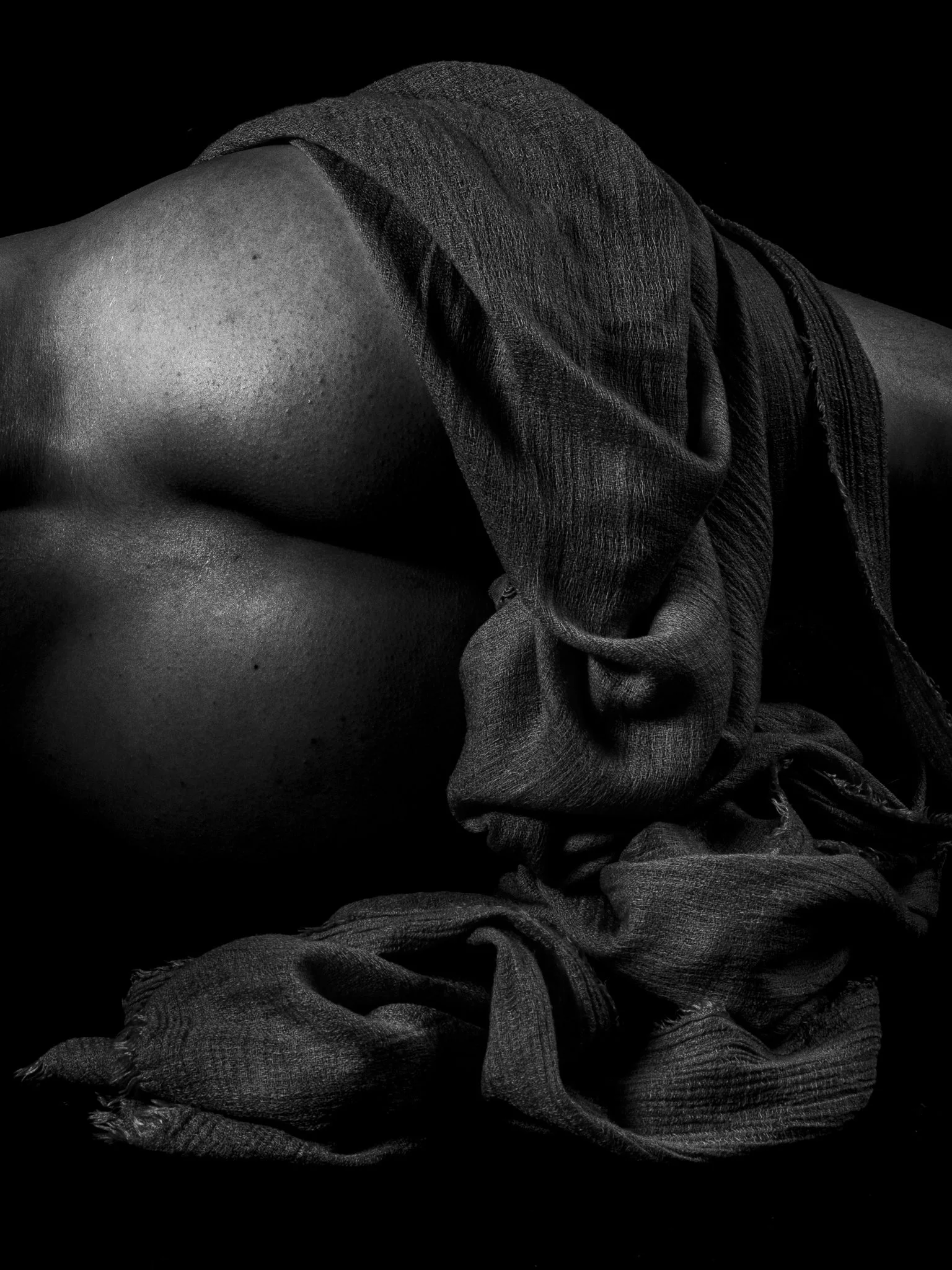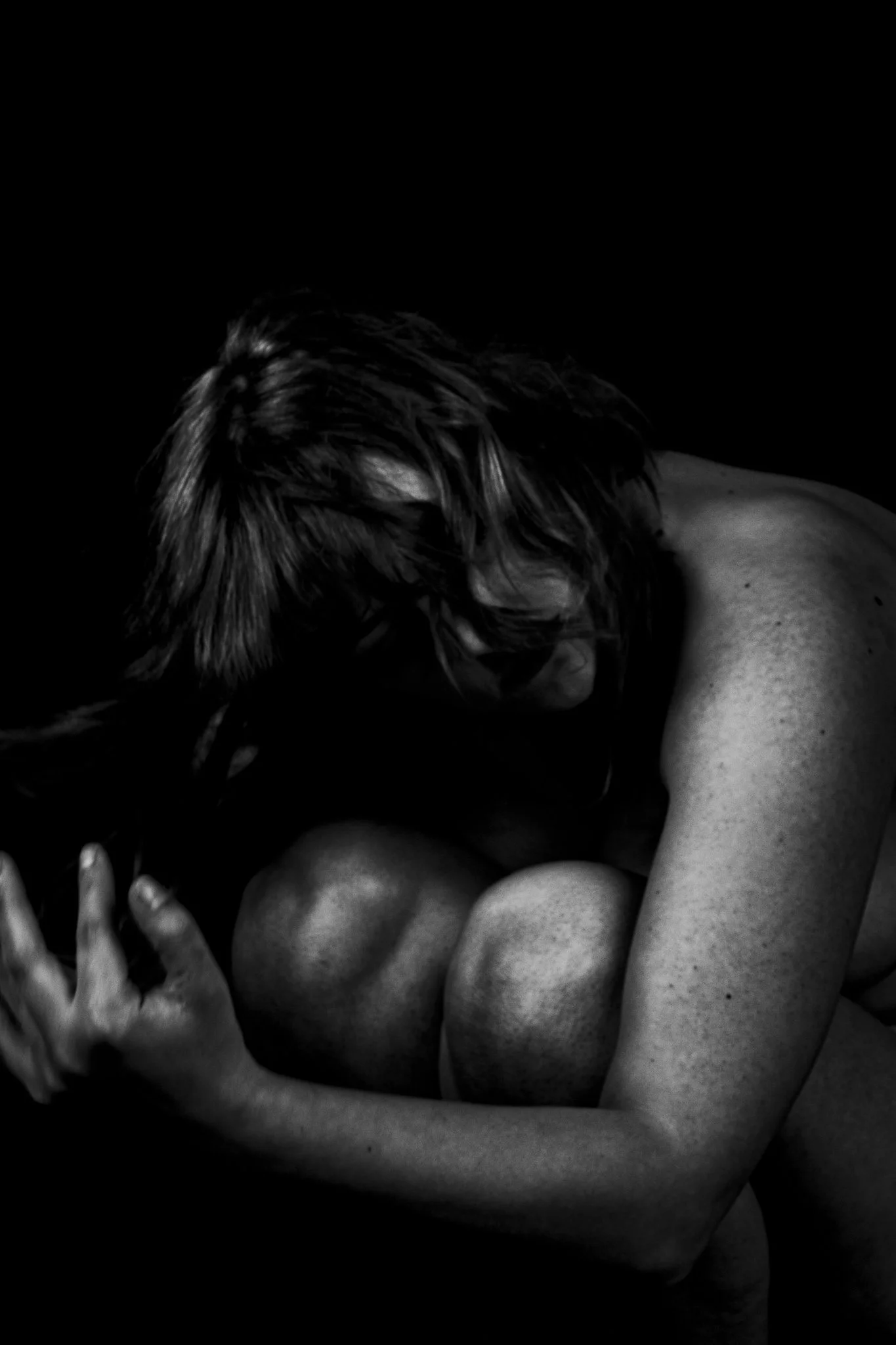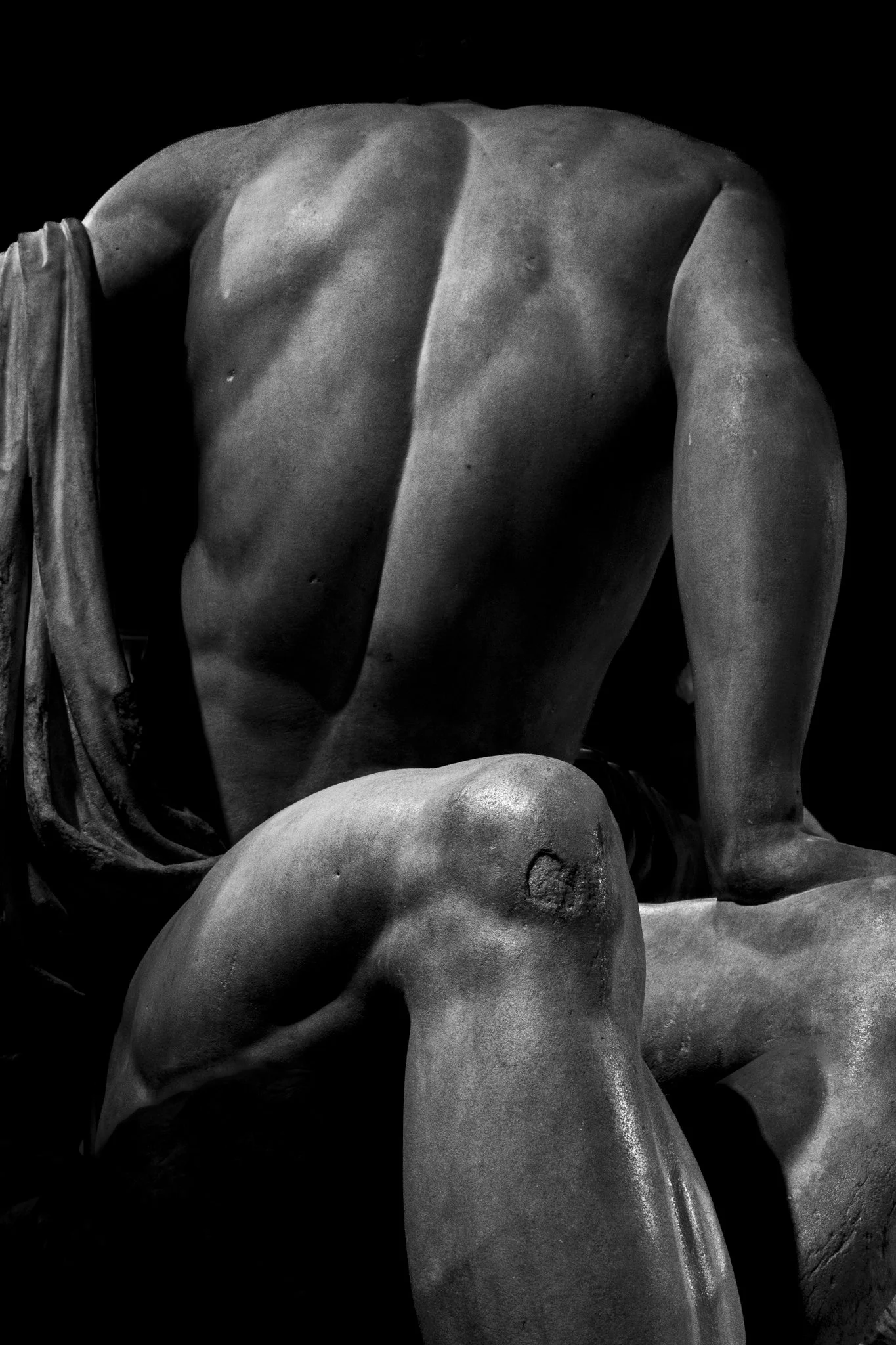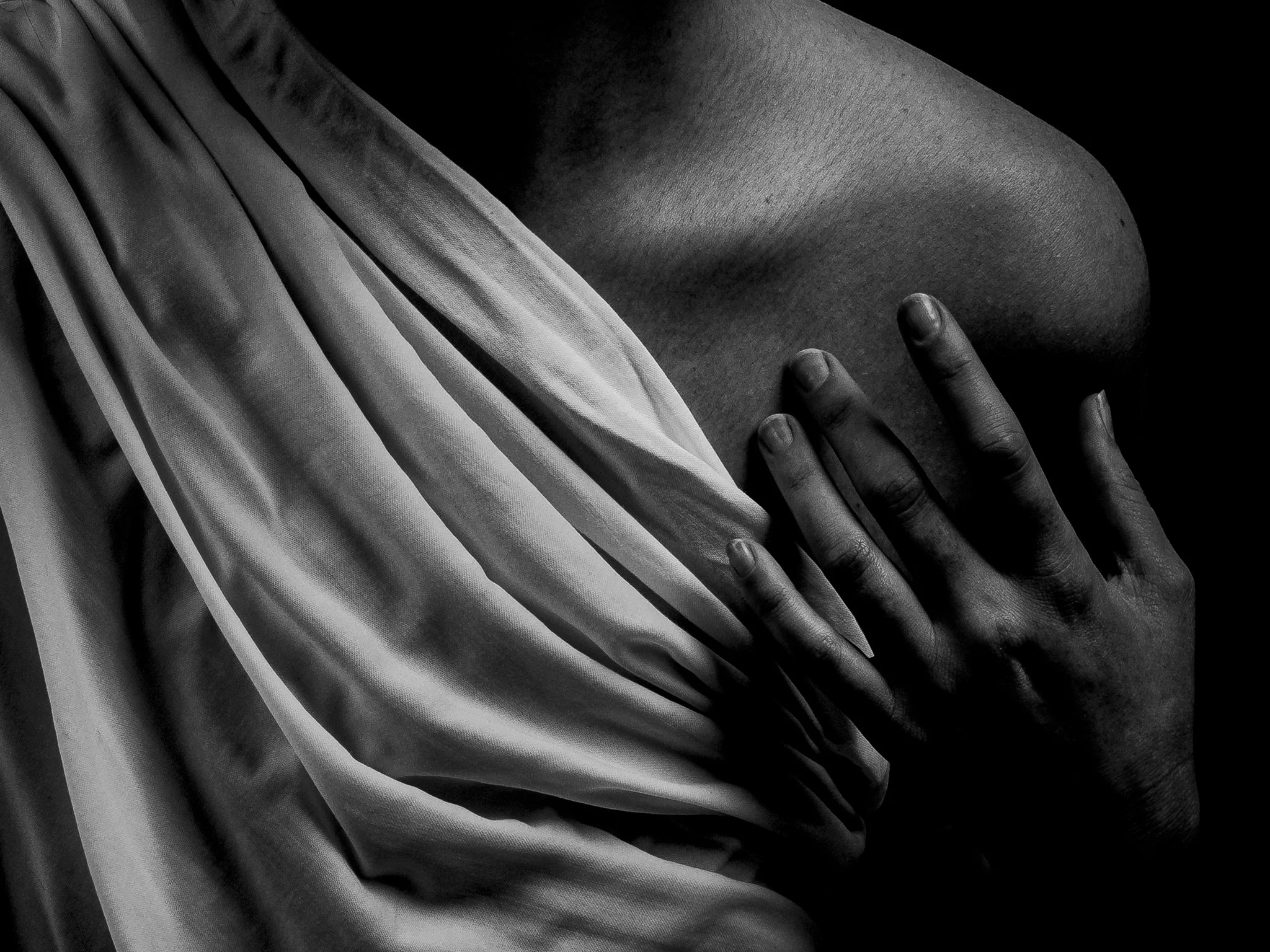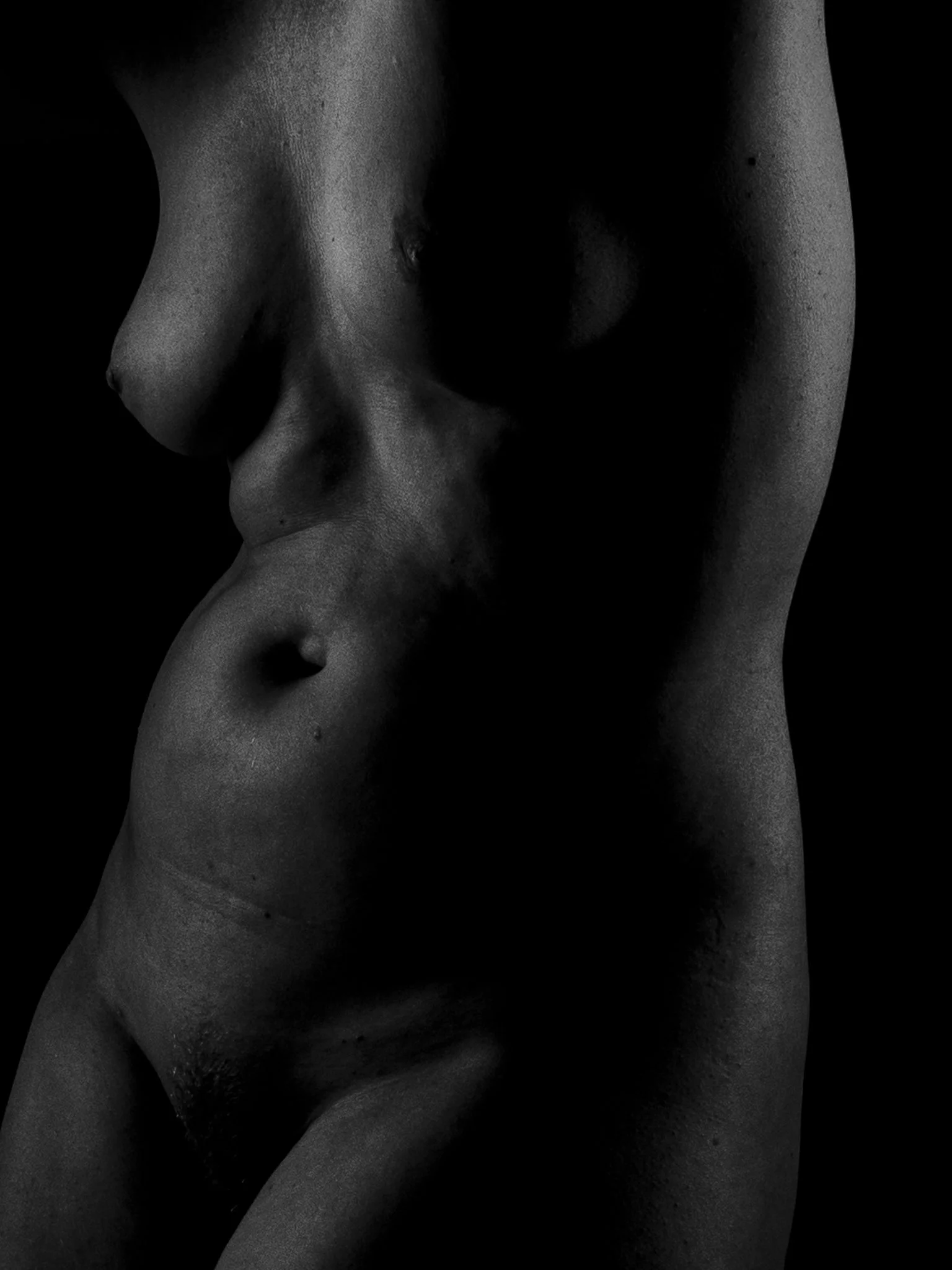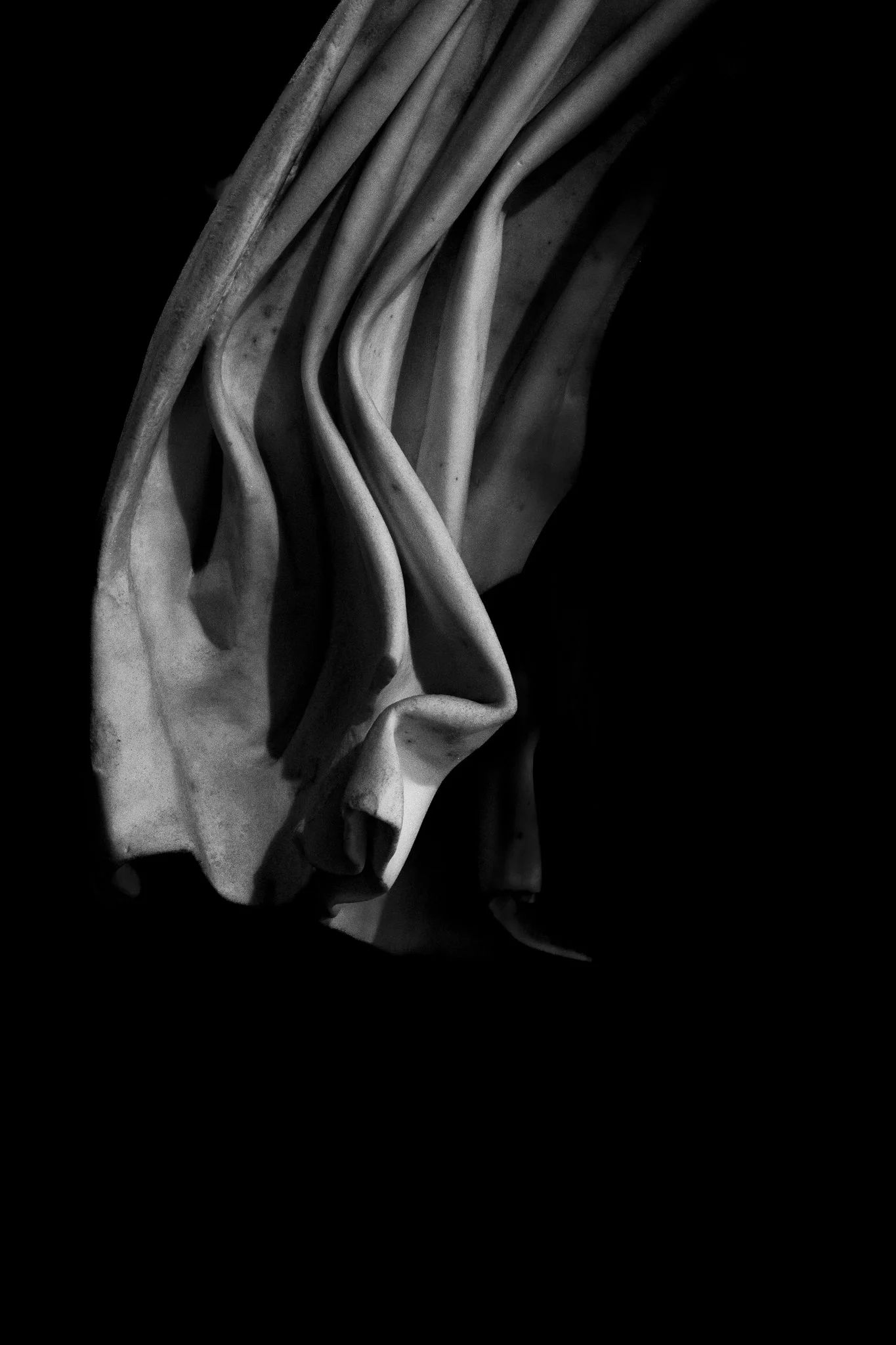GRAVITY
In our age of infinite digital possibility, gravity itself becomes an act of resistance: a reminder that the most profound beauty emerges not from effortless perfection, but from the honest dialogue between aspiration and limitation, between what we dream of becoming and what we actually are. The realness of life that fills the space between dreams.
A study of the human form that juxtaposes neo-classical and baroque sculpture with photographic nudes. The work explores gesture, bodies and gait in an age where the body is relentlessly commodified, digitised and sexualised.
The working title "Gravity" comes from the principal force that dictates how the human skeleton is formed, and how a sculptor must shape a lump of stone. My training as an architect was regularly interrupted with references to the Vitruvian man, and its lumpy cousin, Le Corbusier's Modulor man - everything is body-centric.
The distinction between the vulnerable naked and the idealised nude, has never felt more pointed than in our current age of digital manipulation, where the human form is relentlessly commodified, digitised, and sexualised.
Gravity shapes both human skeletons and sculptural stone. Michelangelo understood this fundamental force when he declared, "Every block of stone has a statue inside it and it is the task of the sculptor to discover it." His famous assertion: "I saw the angel in the marble and carved until I set him free" speaks to sculpture's subtractive nature, its relationship with material resistance. Each strike of the chisel must contend with gravity, with the weight and grain of marble, with the physical limitations of stone that will crack if pushed beyond its structural capacity.
2022-ongoing

